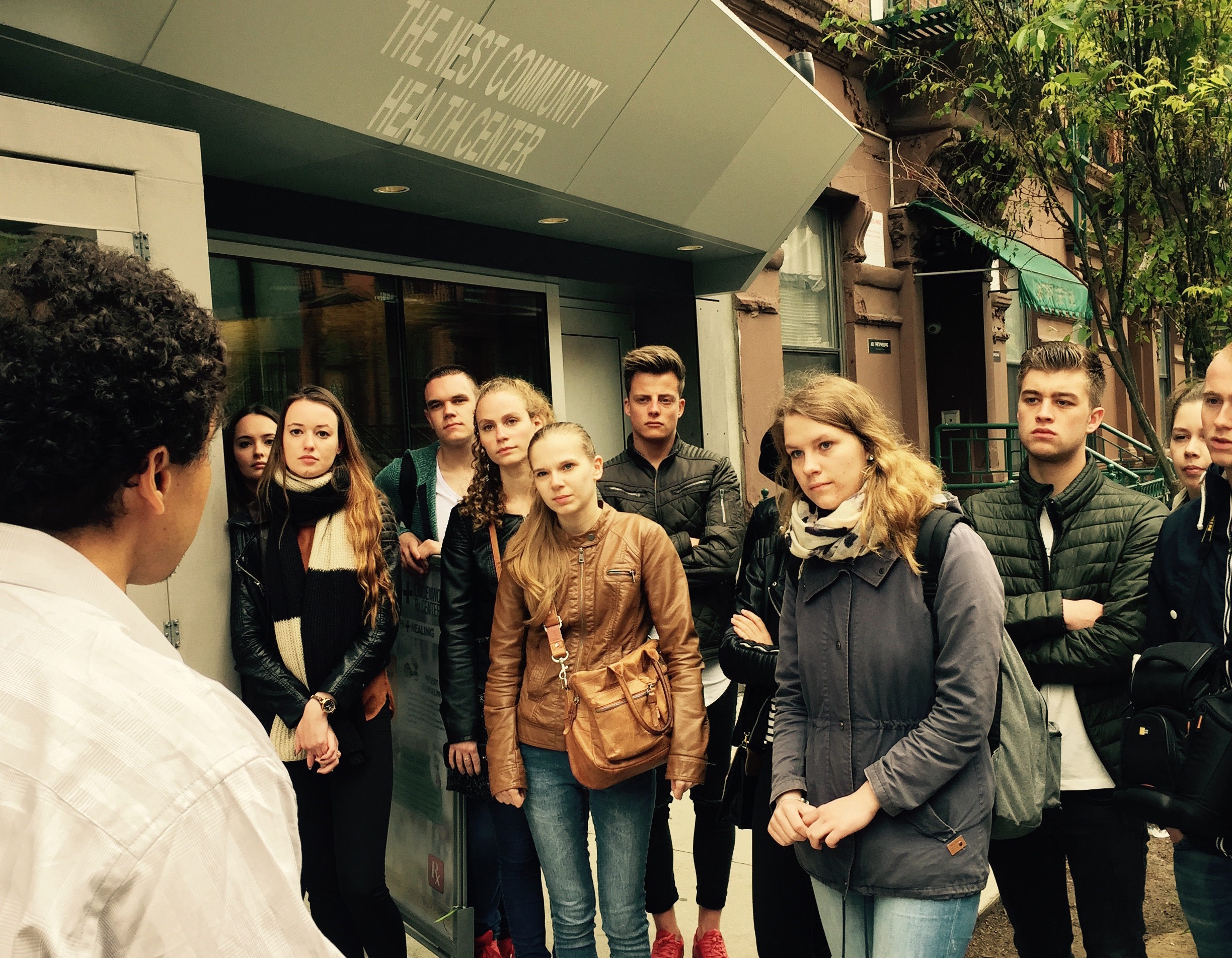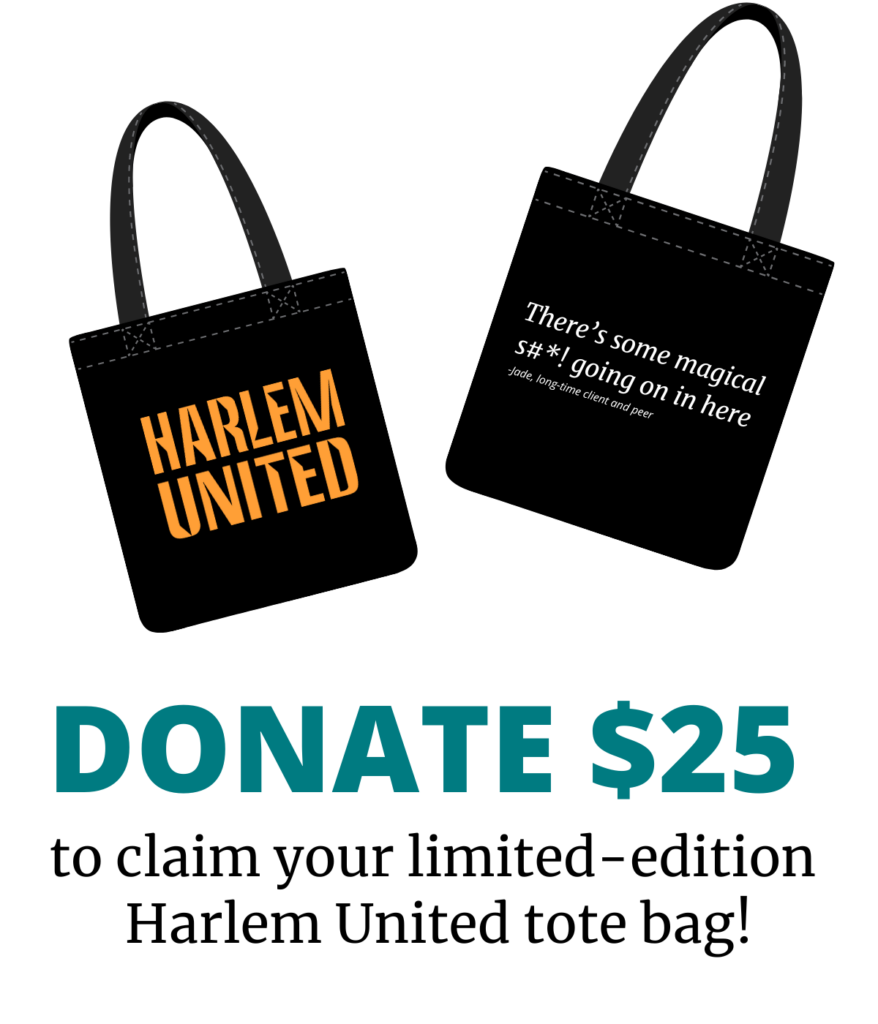On April 26th, 30 journalism students from Holland, visited Harlem United. This is a guest post from Bastiaan Kah, one of the students, sharing their experience.
At a glance 133rd street looks like any other street in Harlem. Four-story brick houses, with steps out front. A/Cs hanging out the windows, usually with bars in front of them, and cars crammed in every available space. But right in the middle a different building stands proud. A glass and steel construction called “The Nest” rises. Named after the jazzclub that used to occupy the space, it now houses the latest medical center of Harlem United.
Harlem United is an outreach program that provides aid all throughout New York City. It started as a way to prevent the aids epidemic that ravaged Harlem and other poor neighbourhoods in New York. It has since evolved into a full-fledged medical program, focused mostly on harm prevention of all kinds. This includes needle-exchange programs, giving away condoms and supplying information on HIV/Aids prevention. They also provide help to at-risk groups, like LGBT people and sex workers.
Waiting to greet us is Rachel Cutler, an associate vice president. She explains the founding, goals and struggles of Harlem United. The group is split into two groups. One group will visit one of outreach centers (more on that later) and the other group will get a guided tour from Doctor Jonathan Keith Joseph. Dr. Joseph, born and raised in Harlem, travelled all over the world and has now come back home to help his borough.
He leads us trough the state of the art medical center. Here all kinds of medical care is provided, from psychiatric help to dentistry. The inside offers all kinds of modern medical care. “It looks just like in the Netherlands”, one student exclaims. Such a remark is about the greatest compliment one can receive from a Dutchman in regards to healthcare.
A wide range of topics is discussed. One of which is how ‘odd’ it is that a program like this is even necessary. In the Netherlands the government would be the one doing everything the people of Harlem United are doing here in New York. However the ruling belief in the United States is that private companies can doing everything better and cheaper than the government. So even though this program receives funding from the government Healthcare system, they still operate in a sort of private/public grey area. This means that funding is always a difficult and never certain.
After the tour we travel, after a brief intermission for lunch, to an outreach center. Here people can come in and get the help they need. Here they can come in and get information. This is completely non-binding. If they want they can walk right out the door at any time. However ‘curing’ people of whatever may ail them is not the goal here. The focus lies entirely on harm prevention. If the people of Harlem United can get them to use clean needles it’s considered a win in their book.
There is a bit of a culture shock when we sit down with one of the volunteers. Handing out needles to drug-addicts is a difficult topic in New York, but hardly raises an eyebrow in the Netherlands. And the fact that we test drugs for safety in the Netherlands, is almost impossible to comprehend to the average American. After a moving conversation with a drug-addict turned volunteer we visit a van in the middle of Harlem.
From afar it’s a rather unremarkable white van, but this car provides one of the most important services Harlem United provides. Here clean needles are given away to whoever wants them. All that is required are initials and date of birth (neither of which have to be true). These clean needles prevent the exchange of disease, because addicts no longer have to share needles. Over 200.000 needles have been given out this way this year alone. The van even has a quiet room in the back for people, if they just want to talk.
After the visit to the van we leave the people of Harlem United. In this burough where the goverment is unable or unwilling to provide the help this area needs, the public needs to step in. In Harlem they get this help from an army of hardworking volunteers and professionals. People like Dr. Joseph and Rachel, people from Harlem willing to help those who can’t help themselves.

